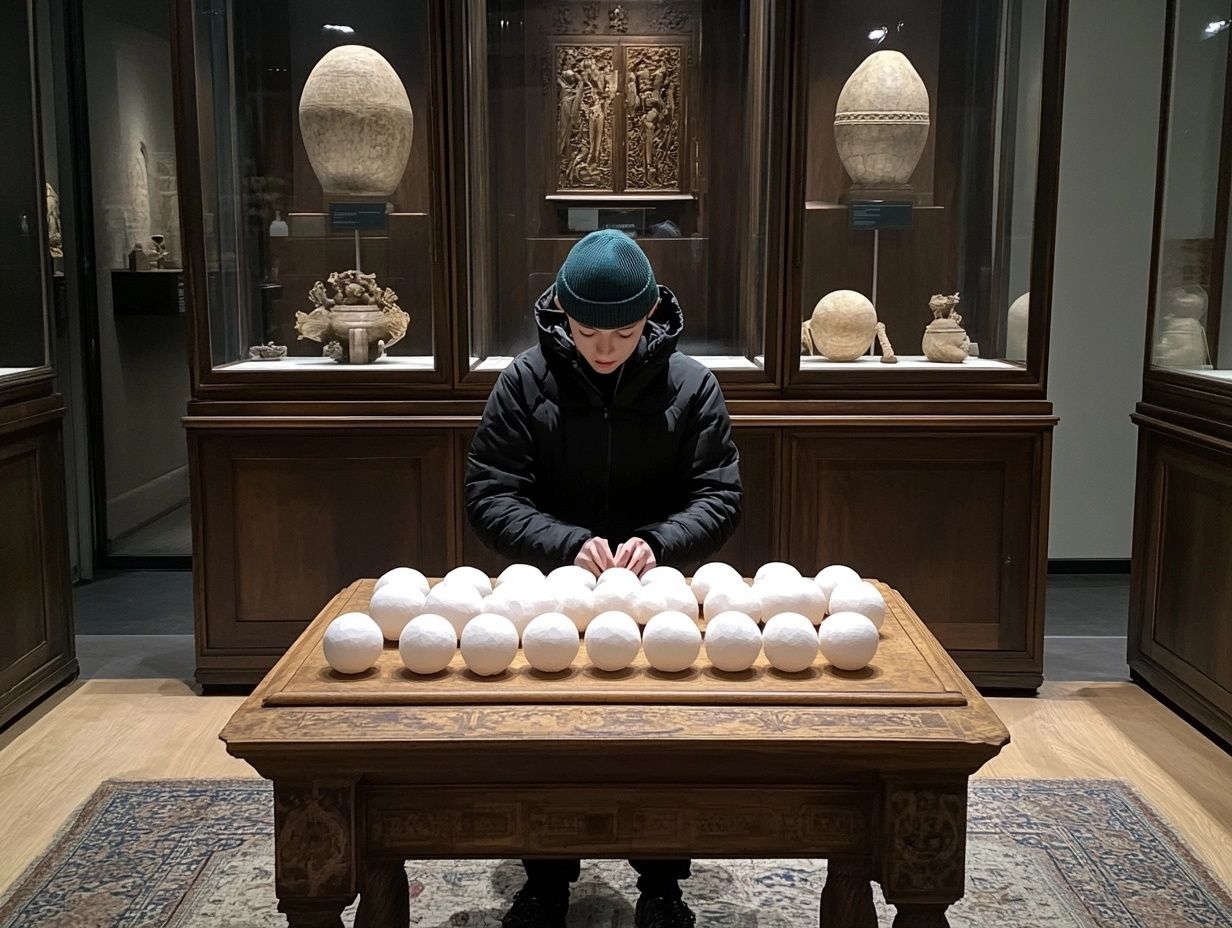I asked the artificial intelligence how money laundering related to the modern and contemporary art market works. In other words, how can it happen that money from illicit trafficking in drugs, weapons, or otherwise, or from the underworld, can be “washed” and made perfectly legal through the modern and contemporary art market. The AI replied to me that this market lends itself particularly well to money laundering, essentially because of these factors: subjective artwork valuation subject to totally manipulable markups, lack of transparency, international mobility, and limited use of financial controls.
In particular, the value of the work, as something that indicates its price, can be overestimated to justify the transfer of large sums and underestimated to make it look like a legitimate purchase. Once purchased, the work can be resold at an artificially high price. In a performance I have been making since 2019, it is shown how in a simple ball of paper we can “see” 100 years of art history, and at the same time how the art system can print money and make that piece of paper look like a 60,000 euro bill in a completely legitimate way. I can transfer the work from country A to country B without being subjected to controls and customs duties, I can receive large sums of money in a perfectly legitimate way, and if I donate the ball to a museum I can easily get tax relief.

I then wanted to ask the AI, more precisely, how the recycling system works in art. This research is very important because if the system of speculation and recycling takes over, one can well understand why, as has been happening for at least 20-25 years, the artistic value of the work is totally useless and irrelevant. In 2016, an international investigation (Panama Papers and Swiss Leaks) uncovered the use of the Geneva freeport (free port), a tax-free tax warehouse, as a hub to hide artworks and launder money. A collector was buying artworks through offshore companies with dirty money from the underworld and illicit trafficking. The works, some worth millions, were stored in the freeport, avoiding declaring them for tax purposes and staying off the radar of authorities. At this point the work was resold to a “clean” company, generating legal liquidity. The dirty money was thus washed through the resale of the work. Art is thus used as an easy-to-hide asset, with moving value and difficult to trace, perfect for money laundering.
Even better, as with my paper ball (spring 2019), if the works are represented only by a certificate of authenticity that can freely cross borders and need not even be stored in a freeport. Think what a conceptual short-circuit if the works that are the object and protagonists of this money laundering, which are in fact accomplices of the world’s worst criminals, address, as has been the case in recent years, the noble themes of de-colonialism, post-specisism, feminism and gender fluidity. Perhaps then we should not be surprised if these works are successfully presented in exhibitions, fairs, and biennials, even if they address these themes in a predictable, simplistic, trivial, and often “speculative” way compared to the importance of the themes themselves.
In the Italian and international art world, no one seems to seriously address these issues, as if they were an unspeakable taboo, capable of bringing down the whole system, when instead it would be a way to restore a system of values and market that is silently drifting away.
Warning: the translation into English of the original Italian article was created using automatic tools. We undertake to review all articles, but we do not guarantee the total absence of inaccuracies in the translation due to the program. You can find the original by clicking on the ITA button. If you find any mistake,please contact us.